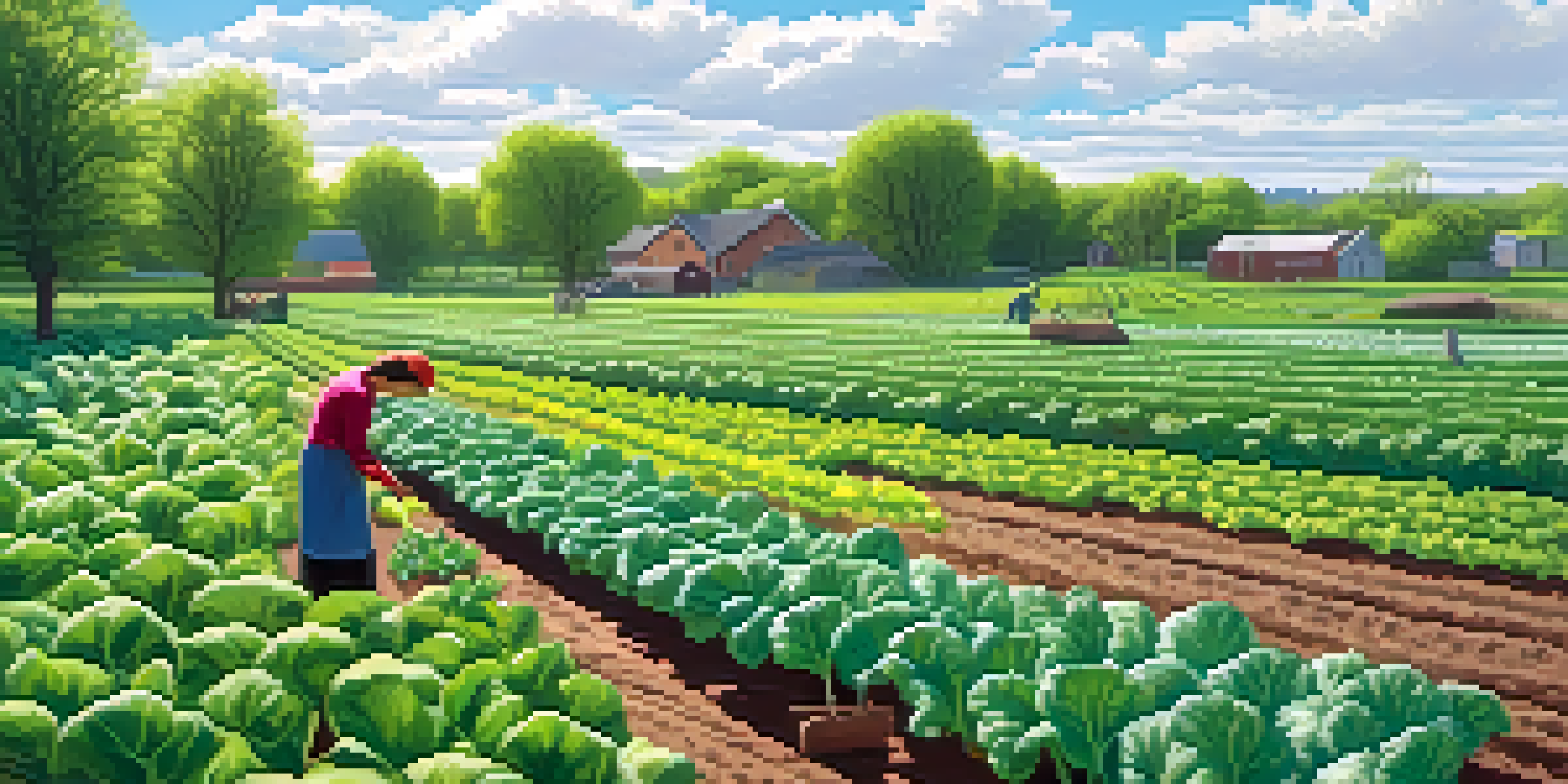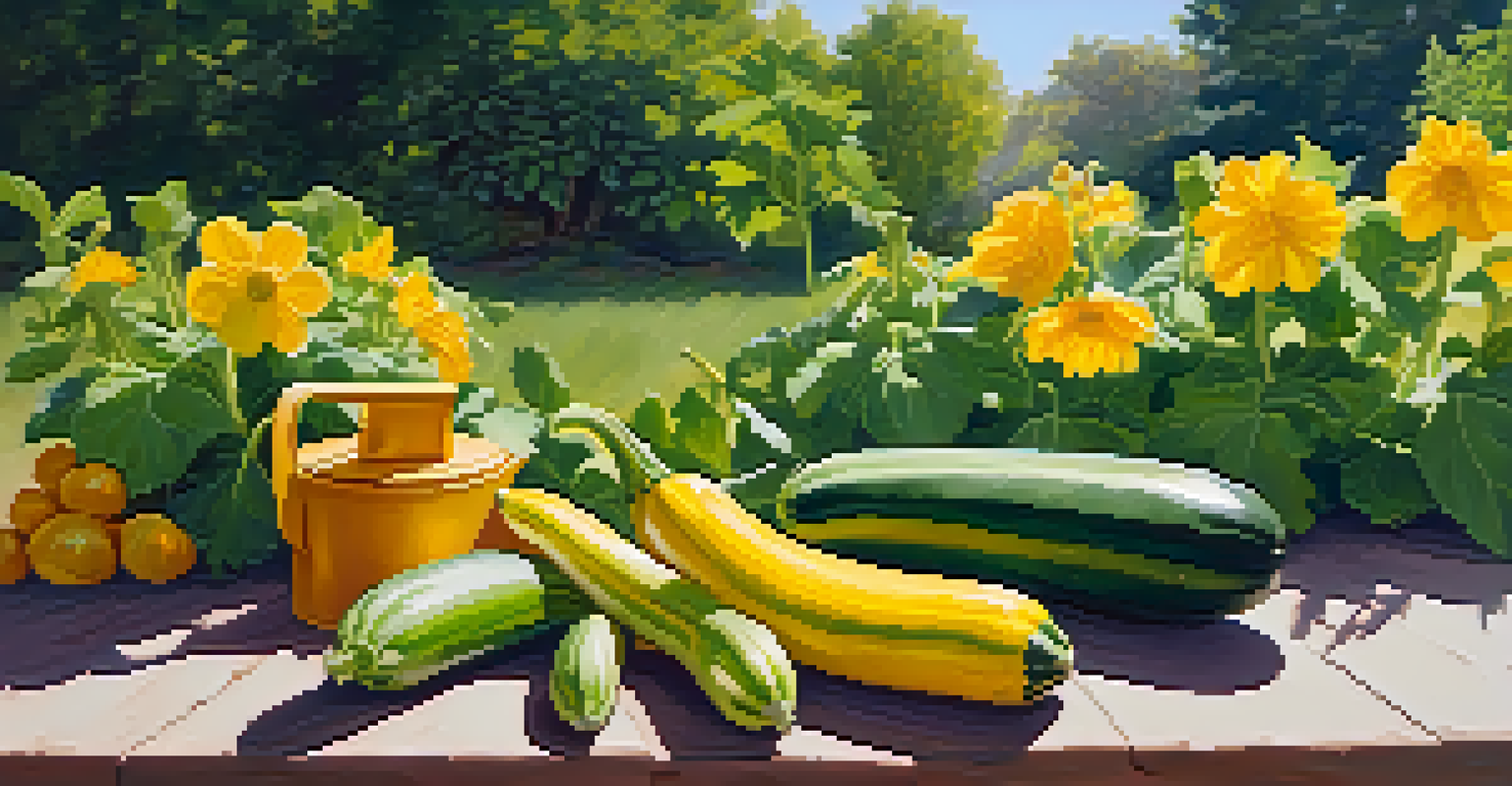Vegetable Planting Calendar: What to Grow Each Season

Understanding Your Growing Season: What to Expect
Before diving into the specifics, it’s essential to understand your growing season. This is typically determined by your local climate, which can vary significantly from one region to another. Knowing your average last frost date in spring and first frost date in fall can help guide your planting decisions.
The garden suggests there might be a place where we can meet nature halfway.
Most areas have a warm season and a cool season, each supporting different types of vegetables. For instance, cool-season crops like lettuce and peas thrive in the chill of early spring, while warm-season crops such as tomatoes and peppers need the sun's warmth to flourish. Understanding these seasonal patterns will set the foundation for your garden’s success.
Consider also the length of your growing season. In warmer climates, you might enjoy a longer growing window, allowing for multiple planting cycles. Conversely, if you live in a cooler region, you might need to maximize your planting efforts within a shorter time frame.
Spring Planting: Kickstart Your Garden
Spring is a time of renewal, making it the perfect season for planting a variety of vegetables. As the soil warms, you can start with cool-weather crops such as spinach, kale, and radishes. These hardy varieties can tolerate a little chill and thrive well before the summer heat sets in.

As the temperatures rise, you can transition to planting warm-weather crops. This is the time to introduce beans, cucumbers, and corn into your garden. Timing is crucial here; planting too early might expose these delicate plants to frost damage, while planting too late could hinder their growth.
Know Your Growing Season
Understanding your local climate and frost dates is crucial for successful planting.
To ensure a successful spring planting, consider starting seeds indoors for plants like tomatoes and peppers. This gives them a head start, allowing you to transplant them outdoors once the risk of frost has passed. With careful planning, your garden will flourish from the very beginning.
Summer Planting: Keeping the Garden Thriving
Summer is a vibrant time for your garden, as many vegetables are in full swing. This season is ideal for planting quick-growing crops like zucchini and summer squash. These crops not only grow rapidly but also provide a bountiful harvest in just a few weeks.
To plant a garden is to believe in tomorrow.
It's also a great time to sow a second round of cool-season crops. For example, you can plant another batch of lettuce or carrots in late summer for a fall harvest. This staggered planting approach ensures that your garden continues to produce throughout the season.
As you navigate summer planting, remember to keep your plants well-watered and mulched. This will help retain moisture in the soil and protect your crops from the intense heat. With proper care, your summer garden can yield an impressive array of delicious vegetables.
Fall Planting: Preparing for Cooler Weather
As we transition into fall, it's time to prepare your garden for the cooler months ahead. Fall planting can be a bit tricky, but it’s an excellent opportunity to grow hardy crops like broccoli, Brussels sprouts, and root vegetables. These plants can withstand the colder temperatures and may even sweeten in flavor after a frost.
Timing is key when planting in the fall. Aim to sow seeds or transplant young plants at least 6-8 weeks before your area's first expected frost. This gives your crops enough time to establish themselves and mature before the temperatures drop significantly.
Spring and Fall Planting Tips
Timing your planting for both cool and warm-season crops ensures a thriving garden.
Don’t forget about using row covers or cold frames to protect your fall crops from unexpected chills. These simple structures can extend your growing season, allowing you to enjoy fresh vegetables well into the winter months.
Winter: Planning Ahead for Success
While winter might feel like a dormant time for gardening, it’s actually the perfect season for planning your next year's vegetable garden. Take this opportunity to reflect on what worked and what didn’t in your previous seasons. Keeping a garden journal can be incredibly helpful in tracking your successes and challenges.
Use this downtime to research new varieties of vegetables you want to try. Winter is also a great time to order seeds, ensuring you have everything you need for the upcoming planting season. Consider exploring heirloom varieties or experimenting with companion planting strategies.
Additionally, think about how you can improve your garden’s layout. Whether it’s adjusting the spacing or adding new raised beds, planning now will set you up for an even more productive growing season when spring arrives.
Companion Planting: A Natural Approach
Companion planting is a gardening technique that involves growing different plants together for mutual benefits. Certain vegetables can enhance each other’s growth, deter pests, or improve overall yield. For example, planting basil with tomatoes can enhance the tomato flavor while also repelling insects.
Incorporating companion planting into your vegetable calendar can help you make the most of your space and resources. Not only will this method promote healthier plants, but it also creates a diverse ecosystem in your garden, which can lead to a more resilient environment.
Harvest and Preserve Your Bounty
Knowing when to harvest and how to preserve your vegetables maximizes the enjoyment of your garden.
Take time to research which plants grow well together and which should be kept apart. Knowing these relationships can help you create a thriving garden that requires less intervention, allowing nature to do some of the work for you.
Maintaining Your Garden: Tips for Success
A successful vegetable garden requires regular maintenance throughout the growing season. This includes watering, weeding, and monitoring for pests. Establishing a consistent routine can make these tasks more manageable and help keep your plants healthy.
Mulching is a simple yet effective way to reduce weeds and retain soil moisture. Organic materials like straw, wood chips, or grass clippings not only suppress weeds but also enrich the soil as they break down. This added layer of protection can be especially beneficial during hot summer months.

Consider implementing crop rotation in your garden plan. This practice involves changing the location of your crops each season to prevent soil depletion and reduce pest buildup. By rotating your vegetables, you’ll maintain a healthy garden ecosystem and ensure long-term success.
Harvesting: Enjoying the Fruits of Your Labor
Harvesting is one of the most rewarding aspects of gardening. Knowing when to pick your vegetables is crucial to enjoying their peak flavor and freshness. Each variety has its own ideal harvesting time, so take the time to research and observe your plants closely.
For instance, leafy greens like lettuce can be harvested as soon as they reach a desirable size, while root vegetables like carrots should be left in the ground until they're fully matured. Regular harvesting also encourages plants to produce more, leading to a continuous supply of fresh produce.
As you harvest, consider preserving or storing excess vegetables to enjoy later. Whether through canning, freezing, or drying, there are numerous ways to extend the life of your harvest and savor the flavors of your garden long after the season ends.